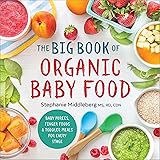Have you ever stopped to wonder if the idyllic images of dairy farms truly reflect reality? The video above offers a glimpse behind the scenes, contrasting our pastoral expectations with the stark experiences of modern dairy cows. It raises important questions about animal welfare, the nutritional value of milk today, and the powerful influence of the dairy industry’s marketing.
For many years, milk has been presented as an essential part of a healthy diet, a natural and wholesome product. However, as the discussion highlights, the journey from cow to carton in contemporary industrial farming often involves practices that might surprise the average consumer. Let’s delve deeper into some of these revelations and explore what they mean for our health and ethical choices.
The Hidden Realities of Modern Milk Production
The mental picture of cows grazing freely in vast, green pastures is a deeply ingrained part of the dairy narrative. This imagery, often seen on milk cartons and advertisements, creates an impression of naturalness and contentment for the animals. Yet, as the video underscores, the reality for many dairy cows can be quite different from these tranquil scenes.
Firstly, the conditions on many industrial dairy farms stand in stark contrast to these marketing portrayals. Instead of open fields, cows might spend their lives confined in sheds, sometimes tethered by short ropes. For example, the video mentions seeing 30 cows packed side-by-side, each tied to a mere three-foot rope, barely able to turn around. Such severe confinement restricts their natural behaviors and causes immense physical and psychological stress, turning these intelligent animals into mere milk-producing machines.
Secondly, the emotional lives of these animals are often overlooked in the pursuit of efficiency. A mother cow’s bond with her calf is incredibly strong, much like that of a human mother and child. When a calf is born, it is almost immediately separated from its mother, a practice that causes profound distress for both the mother and the baby. This separation, happening shortly after birth, breaks a vital maternal bond and has lasting emotional impacts on these sentient creatures.
Understanding Hormones in Dairy Cows and Milk
One of the most critical aspects of modern dairy farming, briefly touched upon in the video, is the use of hormones to maintain milk production. Dairy cows naturally produce milk after giving birth, to feed their calves. When calves are separated, or in circumstances where they don’t survive, cows need continuous stimulation to keep producing milk.
This ongoing production often relies on external interventions. Cows are routinely injected with various hormones, sometimes on a daily basis, to extend their lactation cycles far beyond what would naturally occur. These hormones are designed to boost milk yield, ensuring a steady supply for human consumption. This process effectively manipulates the cows’ natural biology, pushing them to produce an unnatural amount of milk throughout their lives.
The long-term effects of these hormones on the cows themselves include increased risk of infections like mastitis, a painful udder inflammation. For consumers, the presence of these hormones, even in trace amounts, in the milk we drink has raised concerns among health professionals and the public alike. While regulatory bodies often deem these levels safe, many people prefer to avoid consuming products that come from animals treated with such substances, seeking a more natural and hormone-free diet.
Ancient Milk vs. Today’s Dairy: A Nutritional Divide
The video makes a compelling point about the vast difference between the milk mentioned in ancient texts and the milk we consume today. This comparison is not merely poetic; it highlights a fundamental shift in how milk is produced and its potential impact on its nutritional profile and overall quality. The concept of milk from “ancient texts” often evokes images of naturally grazed, healthy animals, producing milk for local communities in harmony with nature.
In contrast, modern industrial dairy operations prioritize volume and shelf life. The intensive farming practices, genetic modification for higher yield, and the use of hormones and antibiotics can alter the composition of milk. While raw milk from a naturally raised cow might offer specific enzymes and nutrients, commercial processing, including pasteurization and homogenization, significantly changes its properties. Pasteurization, for instance, heats milk to kill bacteria, but it also destroys beneficial enzymes and alters some vitamins, affecting the milk’s bioavailability and overall nutritional impact.
Furthermore, the diet of dairy cows today, often consisting of corn and soy rather than their natural forage of grass, also affects the milk’s quality. This shift in diet can lead to a less favorable omega-3 to omega-6 fatty acid ratio, and potentially lower levels of certain fat-soluble vitamins. So, when the video states that today’s milk and ancient milk are “poles apart,” it points to not just ethical concerns but also a profound transformation in the very liquid itself.
Exploring a Plant-Based Lifestyle and Alternative Milks
Given these insights into the dairy industry, it’s understandable why many individuals, like those at Satvic Movement, are transitioning towards a plant-based lifestyle. This shift isn’t just about avoiding dairy; it’s about embracing a broader spectrum of foods that align with ethical, health, and environmental values. The good news is that the world of plant-based alternatives has expanded dramatically, offering delicious and nutritious options for almost every traditional dairy product.
For milk, a wide array of plant-based beverages is readily available, each with its unique flavor and nutritional profile. Almond milk, for example, is light and refreshing, often fortified with calcium and vitamin D. Soy milk provides a good source of protein and has a creamy texture suitable for cooking and coffee. Oat milk has gained immense popularity for its smooth consistency and slight sweetness, making it a favorite for lattes.
Additionally, coconut milk offers a rich, tropical flavor, while rice milk is a hypoallergenic option for those with multiple sensitivities. Many of these plant-based alternatives are fortified with essential nutrients like calcium, vitamin D, and B12, ensuring that individuals can meet their dietary needs without consuming animal products. Exploring these options opens up a world of culinary possibilities and helps mitigate the ethical and health concerns associated with the modern dairy industry.











